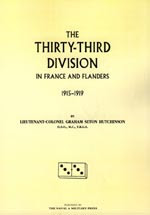Today, 3rd October 2016, I remember my great uncle, John (Jack) Frederick Nixon, who was killed in action 98 years ago.
In the photograph above, four of the five Nixon brothers set out on a night out. Sid is on the left, with Jack next to him, then Edgar, then Walter (my grandfather). The photographer was probably the youngest brother, Alf. All five would serve in the First World War and all but Jack would survive.
You can read a lot into events a hundred years ago, but my own feeling is that the First World War completely changed the dynamic that existed in the family prior to 1914. I am fortunate to possess a lot of family photos from that time, and the evidence I have seen shows that the family did things together. They were a large family of seven girls and five boys but they certainly went away together (that's some of the family at Gorleston above in about 1910 or 1911 with Jack larking about, far left), played together and joked together. In the photo below, probably taken in the back yard of their Stoke Newington house, Jack (left) and Alf (centre) are in drag, whilst my grandfather is a black and white minstrel.
There were also formal occasions when the family would get together, sometimes with an aspidistra thrown in for good measure. In the photo below, Jack is standing at the back right, and my great grandfather and great grandmother have also turned out for the occasion. The photo probably dates to around 1912.
When Britain went to war in 1914, Alf was a serving territorial and immediately volunteered to serve overseas. His brothers were somewhat less enthusiastic. Edgar joined the Royal Flying Corps in 1916 whilst Sid, Jack and Walter all attested under the Derby Scheme in late 1915 and were mobilised the following year. Walter went into the Royal Garrison Artillery whilst Jack and Sid went into the Rifle Brigade. The undated photo of Jack, below, was found in a box of photos belonging to Edgar's only daughter, Olive, who died a few years ago. It almost certainly dates to 1916.
Jack arrived in France in late August 1916 and served with the 16th Battalion, Rifle Brigade until posted to the 8th London Regiment in August 1918. It was whilst serving with the 8th London Regiment that he was killed in action. His body was obviously found because his identity discs - stained with his blood -, and some other small tokens, would later be returned to his mother. She kept the discs and had the blood stains covered over with pink nail varnish. They were found in a box of buttons and odds and ends in his niece's home in Canada and given to me, the nail varnish still very visible.
What should have happened of course was that one disc should have remained on Jack's body so that he could be given a named burial later. This from the Imperial War Museum:
"By 1915 the British Army requirement was to wear two official tags, both made of compressed fibre (more comfortable to wear in hot climates) and carrying identical details. These were again stamped a letter at a time. The two tags required stringing in a particular way. An eight-sided green tag with two holes was strung through one hole and hung around the neck. Through the second hole another much shorter cord was strung, which had a round red tag on it. This method allowed the red tag to be retrieved simply by cutting its short string, leaving the green tag still in place on the body. It meant that others subsequently finding a body with only a green tag would know that the death was already being reported. They could use the details on the green tag to prepare a grave marker."
Whichever well-meaning soul removed his identity discs and emptied his pockets, robbed him of a named Imperial War Graves Commission cross. Instead, he is remembered by name on the Vis en Artois Memorial near Arras, a place I have visited several times, including twice this year. In the photo below, Taken in August this year, my daughter holds the cross and photo I had left for Jack when I was there six weeks earlier.
Jack was 27 years old and single when he was killed. Had he lived, he may well have gone on to lead a happy but normal and unremarkable life like his siblings. Instead, his death, and the wartime experiences of his brothers broke the family dynamic. There are photos of the family taken after the war, but Jack is of course missing, and Sid is also nowhere to be seen (although he was actually not far away, now living in South London, and he would re-surface in later years). One of the boys' sisters, Ethel Bertha Nixon, would meet a Canadian serviceman in London and emigrate to Canada in 1919.
Today then, 3rd October 2016, ninety-eight years after he was killed in action, I again remember my great uncle, Jack Nixon, and in doing so I also remember his brothers, two of whom would name their sons John (and in Sid's case, John Frederick).
Edgar Albert Nixon 1886-1966 (above, right)
Walter Leonard Nixon 1893-1980 (above, left)
Sidney Herbert Nixon 1894-1976 (above, left)
Alfred Arthur Nixon 1897-1990 (above, centre)
Jack Nixon (1891-1918) is pictured right.
If there are any Nixons out there who are related to these brothers - or their sisters - please do get in touch. The sisters' maiden names were:
Lily Elizabeth Nixon, later Lily Elizabeth Maisey 1880-1968
Elizabeth Julia Nixon, later Elizabeth Julia James 1882-1951
Blanche Gertrude Nixon 1883-1976
Mabel Emma Nixon 1889-1945
Ethel Bertha Nixon, later Ethel Bertha Anderson b.1899
Edith Winifred Nixon, later Edith Winifred Bartlett 1901-1982
Jessie Mildred Nixon, later Jessie Mildred Pymm 1905-1995

















No comments:
Post a Comment